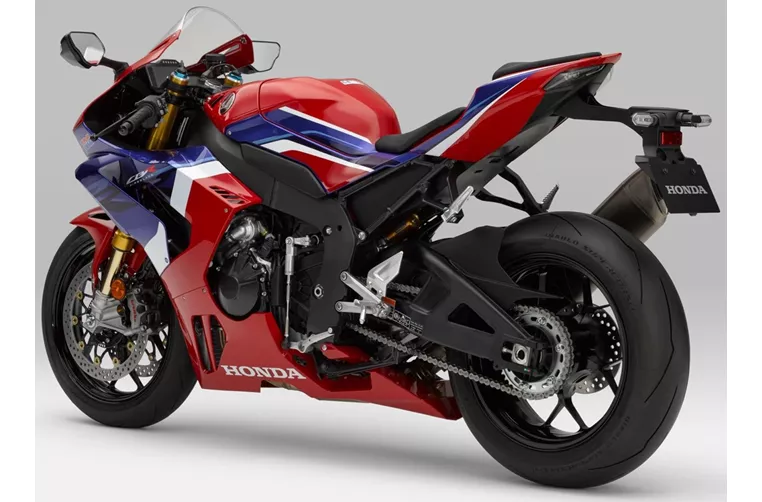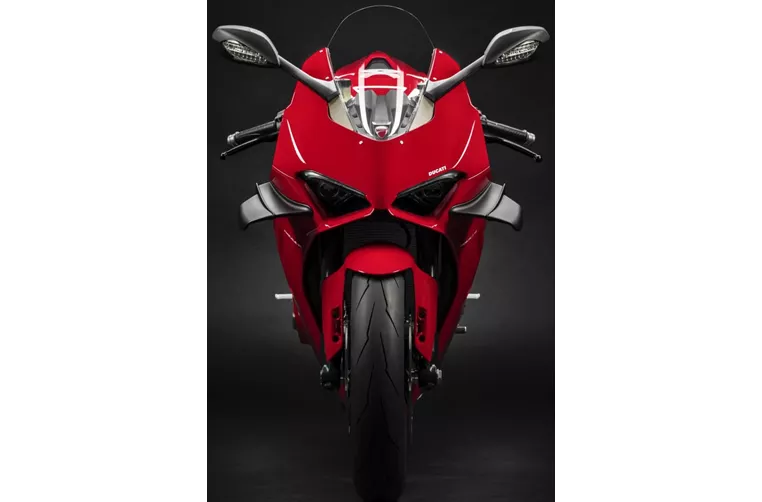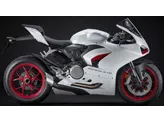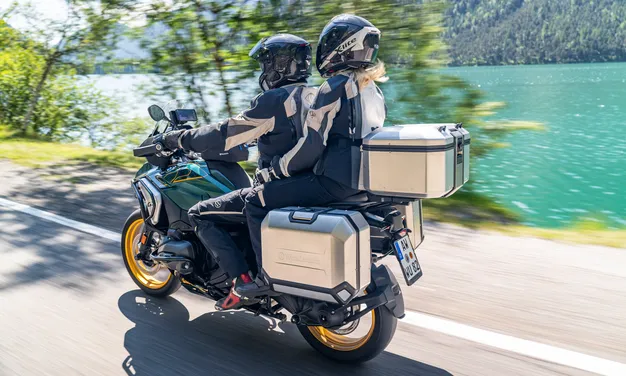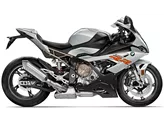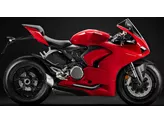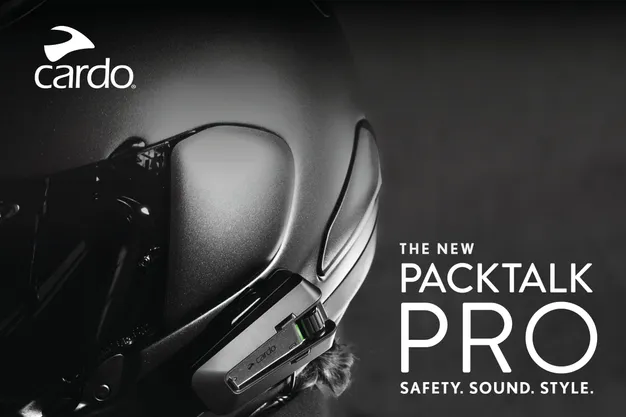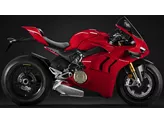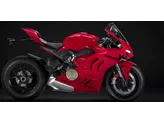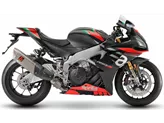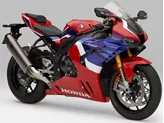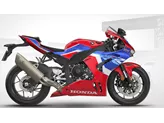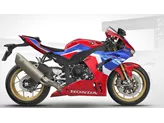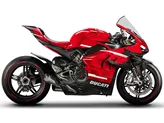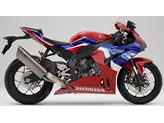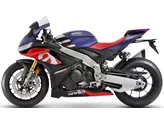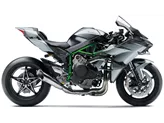Honda CBR1000RR-R Fireblade SP 2020 vs. Ducati Panigale V4 2020

Honda CBR1000RR-R Fireblade SP 2020

Ducati Panigale V4 2020
Overview - Honda CBR1000RR-R Fireblade SP 2020 vs Ducati Panigale V4 2020
When comparing the Honda CBR1000RR-R Fireblade SP 2020 and the Ducati Panigale V4 2020, it is clear that both motorcycles are high-performance supersport bikes with impressive specifications.
Starting with the Honda CBR1000RR-R Fireblade SP 2020, it boasts an inline engine with a displacement of 999.89ccm. This powerful engine produces 217 HP of engine power and 113 Nm of torque. The compression ratio is 13, and it has four cylinders with four valves per cylinder. The engine features DOHC technology, which enhances its performance. On the other hand, the Ducati Panigale V4 2020 is equipped with a V engine with a displacement of 1103ccm. It generates 214 HP of engine power and 124 Nm of torque. The compression ratio is slightly higher at 14, and it also has four cylinders with four valves per cylinder. The valves in the Ducati are Desmodromic, which is a unique feature of Ducati engines.
In terms of suspension, both motorcycles have upside-down telescopic forks at the front. However, the Honda CBR1000RR-R Fireblade SP 2020 features Öhlins suspension, while the Ducati Panigale V4 2020 has Showa suspension. Both suspensions offer adjustments for compression, preload, and rebound. The rear suspension of both bikes consists of a monoshock, with the Honda using an Öhlins shock absorber and the Ducati using a Sachs shock absorber. The rear suspension is also made of aluminum in both cases.
Moving on to the chassis, both motorcycles have aluminum frames. The Honda CBR1000RR-R Fireblade SP 2020 has a twin-spar frame, while the Ducati Panigale V4 2020 has a monocoque frame. The rake and trail measurements are slightly different, with the Honda having a rake of 66 degrees and a trail of 102mm, and the Ducati having a rake of 65.5 degrees and a trail of 100mm.
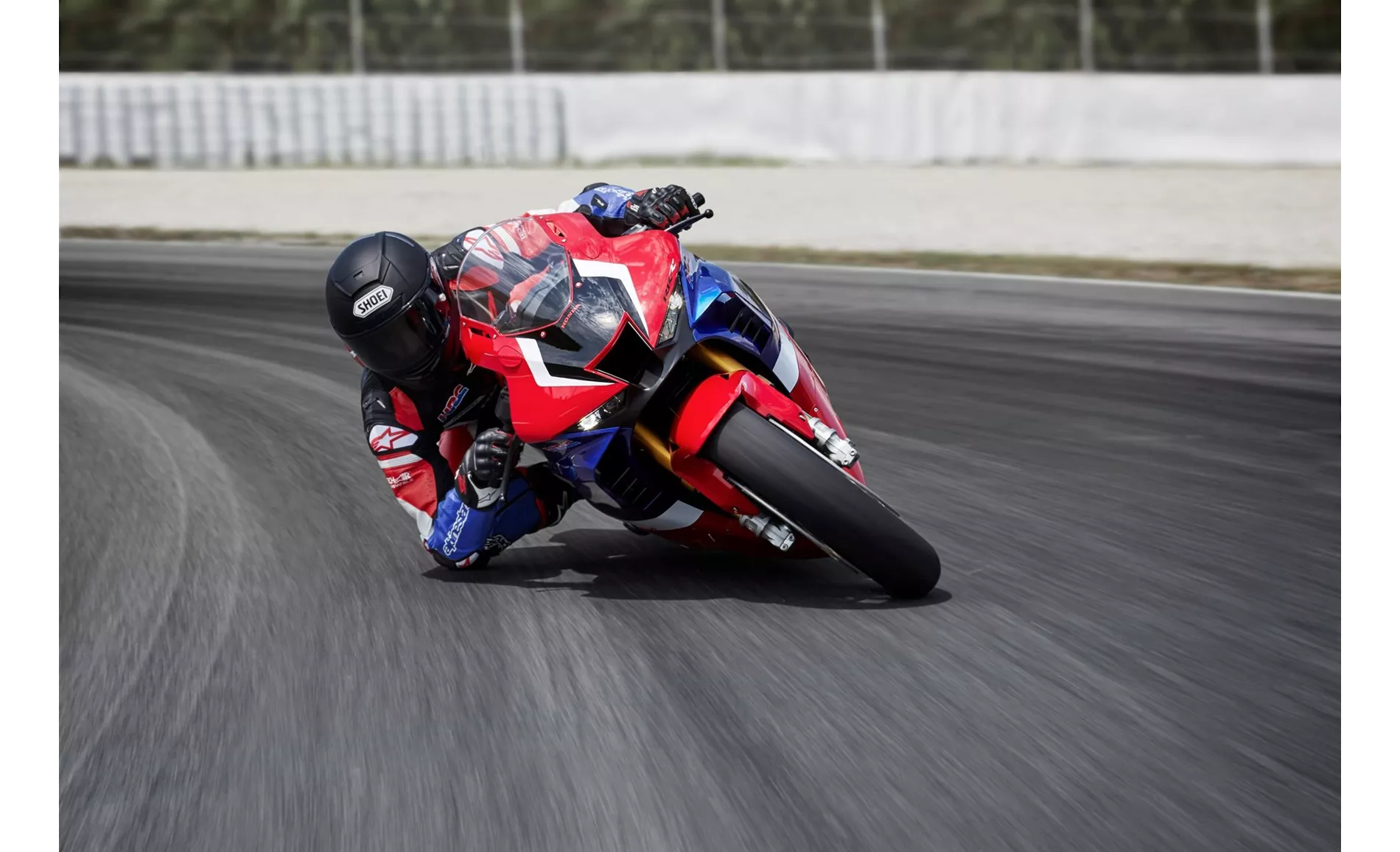
Honda CBR1000RR-R Fireblade SP 2020
In terms of braking, both motorcycles feature double disk brakes at the front with a diameter of 330mm. The Honda CBR1000RR-R Fireblade SP 2020 uses Nissin brakes, while the Ducati Panigale V4 2020 uses Brembo brakes. Both bikes have radial and monoblock technology, which ensures efficient and powerful braking performance.
When it comes to advanced rider assistance systems, the Honda CBR1000RR-R Fireblade SP 2020 offers a comprehensive package. It includes electronically adjustable suspension, riding modes, cornering ABS, launch control, ride by wire, quickshifter, traction control, and anti-wheelie. On the other hand, the Ducati Panigale V4 2020 only offers ABS as an advanced rider assistance system.
In terms of dimensions and weights, both motorcycles have the same front and rear tire widths and diameters. The wheelbase of the Honda is slightly shorter at 1455mm compared to the Ducati's 1469mm. The seat height is the same for both bikes at 830mm. The Honda CBR1000RR-R Fireblade SP 2020 weighs slightly more with a kerb weight of 201kg compared to the Ducati Panigale V4 2020's 198kg. Both bikes have similar fuel tank capacities, with the Honda having 16.1 liters and the Ducati having 16 liters.
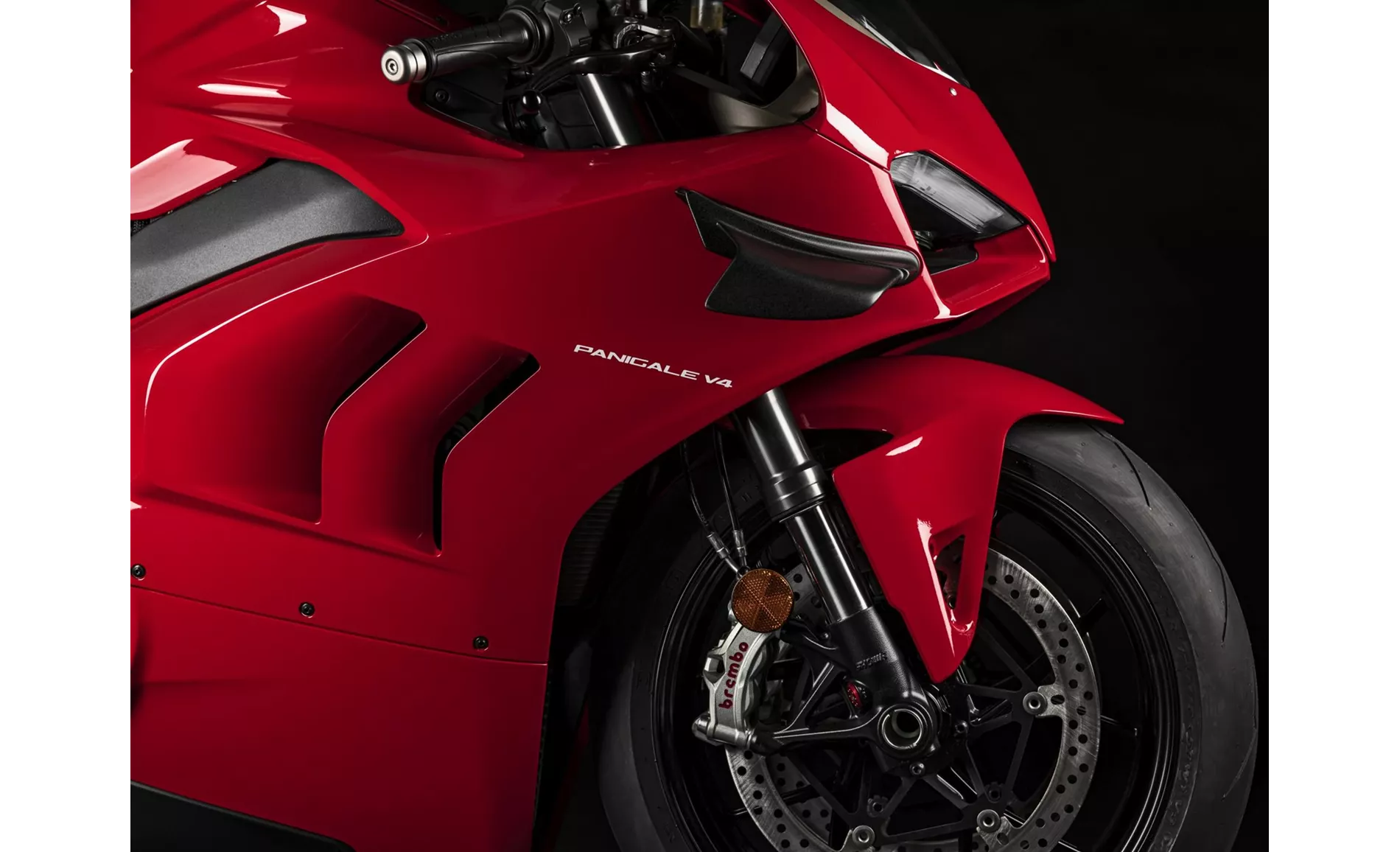
Ducati Panigale V4 2020
In terms of equipment, both motorcycles feature LED headlights. However, the Honda CBR1000RR-R Fireblade SP 2020 also includes LED daytime running lights and a TFT display, while the Ducati Panigale V4 2020 only has LED headlights.
In terms of strengths, the Honda CBR1000RR-R Fireblade SP 2020 stands out for its incredibly powerful engine, super-sporty geometry, state-of-the-art electronics package, crisp feedback from all components, and transparent and powerful braking. The electronically adjustable Öhlins suspension is also a notable strength. On the other hand, the Ducati Panigale V4 2020 is praised for its clever electronics, noticeable upgrade from the previous model, and improved accessibility.
However, both motorcycles have their weaknesses. The Honda CBR1000RR-R Fireblade SP 2020's engine transmission and power delivery are primarily designed for the racetrack, resulting in less happening at lower revs. It also lacks cruise control, which can be a drawback for long rides. The Ducati Panigale V4 2020 has a small fuel tank from an ergonomic standpoint and may not be ideal for long-distance riding. Additionally, straight-line driving at high speeds in wet conditions may pose a challenge.
In conclusion, both the Honda CBR1000RR-R Fireblade SP 2020 and the Ducati Panigale V4 2020 are impressive supersport motorcycles with their unique strengths and weaknesses. Riders looking for a powerful and track-focused bike may lean towards the Honda, while those seeking clever electronics and improved accessibility may prefer the Ducati. Ultimately, the choice between the two will depend on individual preferences and riding style.
Technical Specifications Honda CBR1000RR-R Fireblade SP 2020 compared to Ducati Panigale V4 2020
Pros and Cons in comparison
Pros and Cons in comparison
Honda CBR1000RR-R Fireblade SP 2020
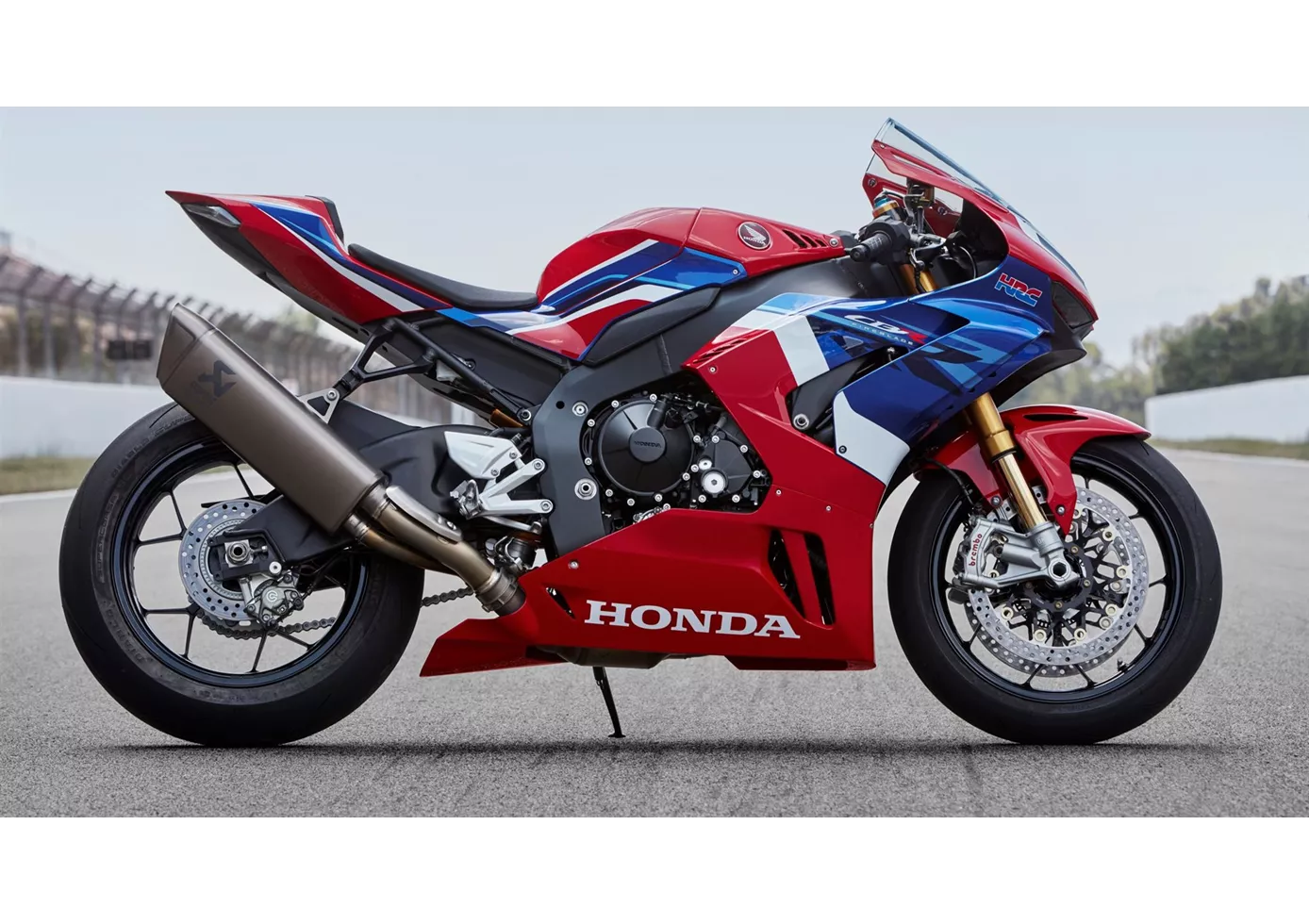
The fans demanded it and Honda delivered: The new CBR1000RR Fireblade SP is the sportiest Blade ever. For the first time, it now has a clear focus on the race track. Many of its strengths, such as the wonderfully stable and direct handling or the braking performance, can of course also be exploited on the country road. But especially in the engine chapter, Honda took a clear path: no compromises, power and lap time come first. This is reflected above all in the fact that below 6000 revs, the power output is rather meagre, which in turn is not quite optimal on the country road. But if that doesn't bother you, you'll be happy with the new Fireblade. Honda took no risks and simply brought the best partners on board for the SP: Akrapovic, Öhlins and Brembo were the congenial partners of the Honda crew. Of course, all these components also have a corresponding price tag.
Ducati Panigale V4 2020
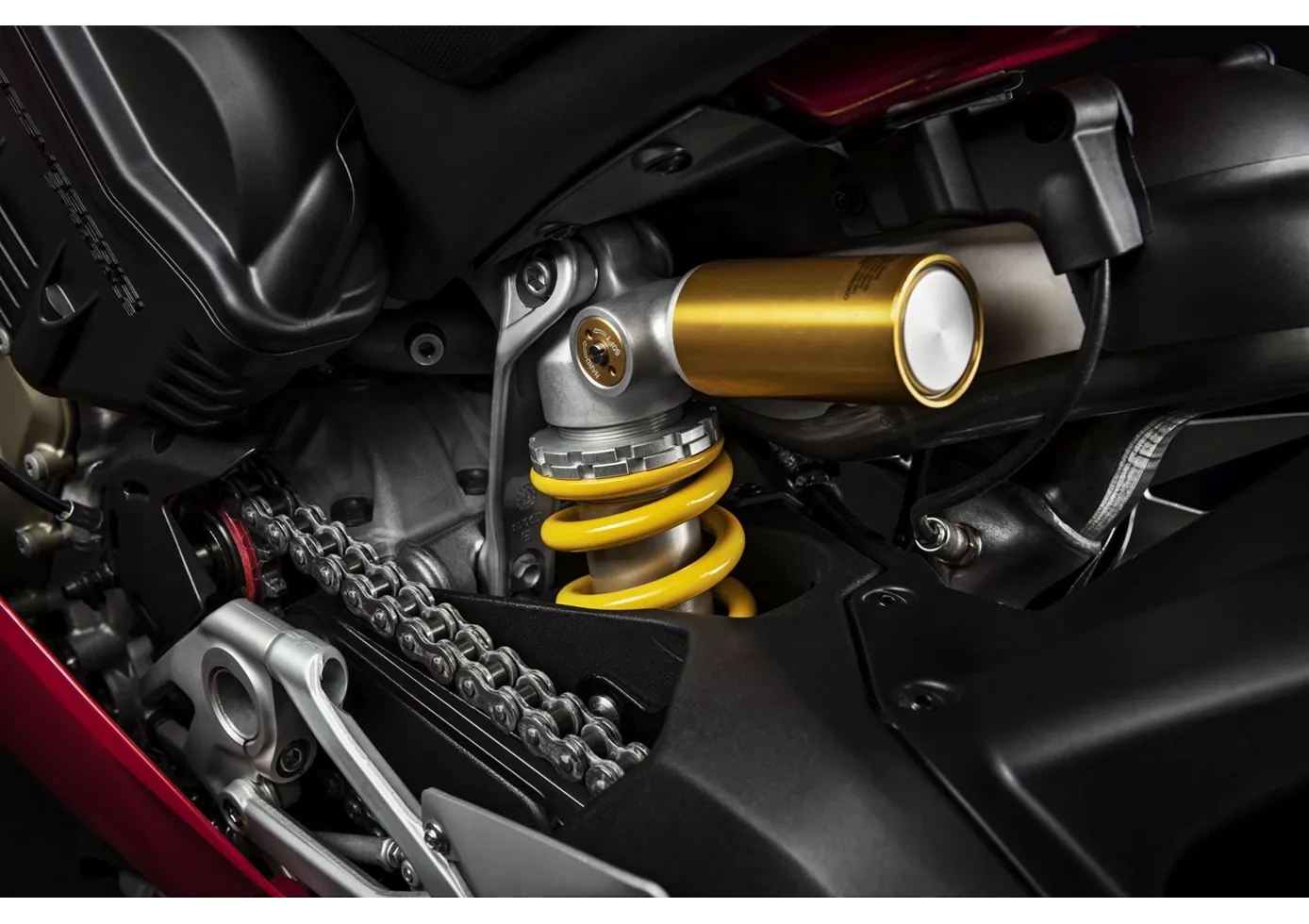
The conclusion is very easy for me. Ducati has made an "already almost perfect motorbike" even better without changing anything in a negative way. Although riding on the road with this radical fairing probably causes a stir and one or two riders find it uncomfortable, they obviously feel more comfortable with it on the race track. You get a motorbike "out of the box" that resembles a Superbike World Championship bike more than ever. I also believe that the V4 2018 owner is quite capable of improving his lap times with the 2020 version. My tip: if you take care to enlarge the tank or make it more grippy, you could go over the centre even more with your hull.
Price Comparison Avarage Market Price Honda CBR1000RR-R Fireblade SP vs Ducati Panigale V4
There are a few key differences between a Honda CBR1000RR-R Fireblade SP 2020 and a Ducati Panigale V4 2020. In terms of price, the actual average price of a Ducati Panigale V4 2020 is about 72% higher. Compared to Ducati Panigale V4 2020 there are less Honda CBR1000RR-R Fireblade SP 2020 bikes available on the 1000PS.de Marketplace, specifically 5 compared to 6. It takes less time to sell a Ducati Panigale V4 with 100 days compared to 163 days for the Honda CBR1000RR-R Fireblade SP. Since model year 2020 1000PS.de editors have written 21 reviews for the Honda CBR1000RR-R Fireblade SP and 18 reviews for the Ducati Panigale V4 since model year 2018. The first review for the Honda CBR1000RR-R Fireblade SP was published on 04/11/2019 and now has more than 151,000 views. This compares to more than 131,500 views for the first review on Ducati Panigale V4 published on 05/11/2017.
